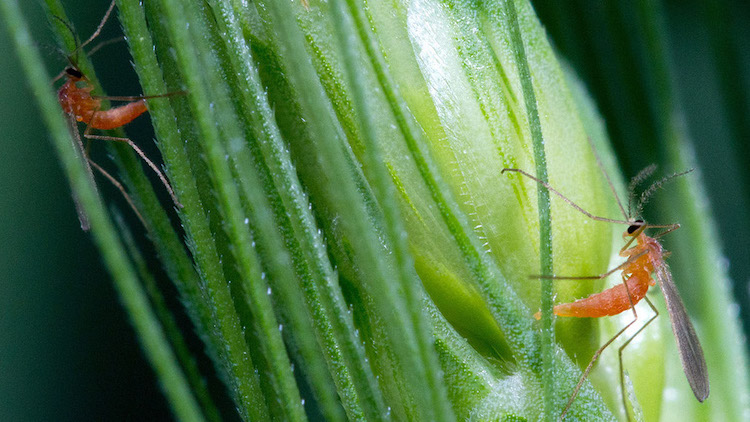
The Woodlands County Agriculture Services Board heard the results of the 2021 Insect Survey on January 11 during their electronic meeting. Dawn Fortin, Manager of Agriculture Services, provided an update on issues discovered through the survey process. “Surveys were carried out by Alberta Agricultural and Forestry and also with the assistance of the Gateway Research Organization out of Westlock, which came out and did some surveys on their behalf. Some of the species that were found were the bertha armyworm and wheat midge, but they were very low numbers, so that’s a good sign.”
Fortin explained that cutworms might be a concern due to the warmth of the fall. The crop regrowth cut was also a potential worry. “It just provided more opportunities for the moths to lay eggs for the upcoming season, so that could be something that we might see coming forward into the 2022 growing season.”
Overall, though, Fortin said the survey results for Woodlands County were pretty good. “We don’t have any rampant insect infestations at this point in our municipality. Also, we can see the entire provincial report as to what’s been out and about in the province.” The report was similar to last year, which producers will likely appreciate.
One bertha armyworm site was found in the municipality, but the number of insects found was low. The first warning level stage is 300 moths, but the grouping discovered was well below that number. Risk is assessed from 0-300 (low), 300-900 (uncertain), 900-1200 (moderate), and 1200+ (high). Fields should be inspected for damage even though infestation is unlikely to be widespread, just in case. The report stated that “field scouting is critical for pest management decisions because experience has shown that field to field and even within-field variations can be very large.”
Bertha’s love canola and are one of the most significant insect pests for the plant. The insect can be devastating and be fairly widespread if allowed to fester. In extreme cases, infestations can spread over millions of acres resulting in mass crop losses for multiple farmers. Surveys, and monitoring programs, such as the one reported to the Agricultural Services Board, are crucial to keeping farmers aware of infestations as early as possible. A heads-up means sufficient time to use various products to curb the lifecycle before severe damage occurs.
Typically, environmental conditions play a significant role in controlling bertha armyworm populations, especially on the overwintering pupae in the ground. Harsh winters with low to no snow cover kill off many pupae. Outbreaks tend to happen in areas with snow accumulation, which protects from prolonged cold weather. The report for Woodlands County found an average of 27 bertha armyworms per trap.
The wheat midge, which was also spotted locally in low numbers, has a history of causing significant damage to crops in Alberta, Saskatchewan, Manitoba, and southern British Columbia. As the name implies, they tend to stick to wheat as their meal of choice. The Government of Alberta website (www.Alberta.ca) stated that “producers inexperienced with wheat midge infestations often mistake the symptoms of damage and report that frost or drought was responsible for reduced wheat yields or grain quality,” which adds a level of trickiness to fighting off the bug.
Another problematic point is that there are no visible, external changes to the shape, size, or colour of the wheat head under attack. Farmers must look inside the wheat and inspect the developing seed within the glumes to know if a crop could be in trouble. Losing kernels lowers a farmer’s yield, but internal damage to the kernels reduces the grade of harvested wheat. An unrealized infestation would be detrimental to the pocketbook. Midge infestations tend to stick closer to the outer edges of fields and typically decline in the inner parts of an area. This behaviour can help farmers save money as outer control practices might be adequate for protecting the remainder of the crop.
Specialists doing the footwork and completing surveys are very cognisant of the possibility of being a conduit for contamination from one field to the next. The report stated that workers never drive into a field. They also sanitize their equipment between areas with a bleach solution and use the same solution to sanitize their footwear or wear boot covers.







More Stories
High-speed action, some trickery and huge hits mark the start of the Wolverines’ 2025 playoffexperience
Reminiscing with Residents: Spruceview edition with Jurgen Moll
A great ending to the regular season, with the post-season coming up next